How to Partition Hard Drive (including C drive) in Windows 11/10 Without Formatting
"Hey guys, I've bought a new Asus laptop with Windows 10. But it comes with one single partition on the hard drive, yes, it's C drive. I want to shrink C drive and create new partitions on the hard disk drive. Can you show me how to partition a hard drive on Windows 10 without formatting? I don't want to see any data loss."

Partitioning or managing a hard drive or disk is an unavoidable operation for all Windows users, especially those who have a new computer or a new disk. And this is a challenge for inexperienced users. Here we'll introduce you to three methods to partition hard drive in Windows 10 by using the Disk Management tool and Diskpart in Windows 10/8/7 or applying professional free partition software.
How to Partition C Drive in Windows 11/10 Without Formatting
Have you received the message "You need to format the disk before you can use it"?
The most common reason behind formatting messages:
- The hard drive is full.
You can not solve it via Diskpart and Disk Management. Because these two tools only work for your hard drive has unallocated space. The Extend Volume in Disk Management is grayed out and your Diskpart will perform the wrong message.
Without the help of third-party software, you can only format the data, which means data loss or re-install the system. So, How to partition c drive in Windows 11/10 without formatting? If you happen to need to expand the C partition, but don't want to lose data by formatting; or if you need more complicated hard drive managements, like merging partitions, resizing partitions, converting FAT to NTFS, dynamic to basic, or MBR to GPT, you can turn to the professional software - Qiling Partition Master.
How to Partition C Drive Without Formatting - Extend C Drive
Step 1. Shrink partition to free up space to extend partition.
If the hard drive has enough unallocated space to extend the target partition, jump to Step 2, and continue. If not, free up space first:
- Click on a partition next to the target partition and select "Resize/Move".
- Drag the partition ends to free up space, leaving enough unallocated space behind the target partition, click "Proceed".
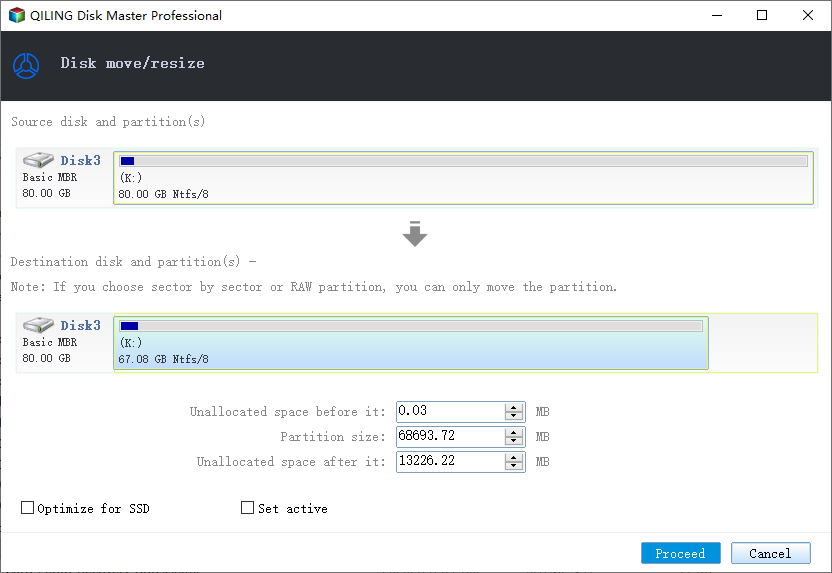
Step 2. Extend target partition.
Click on the target partition and select "Resize/Move".
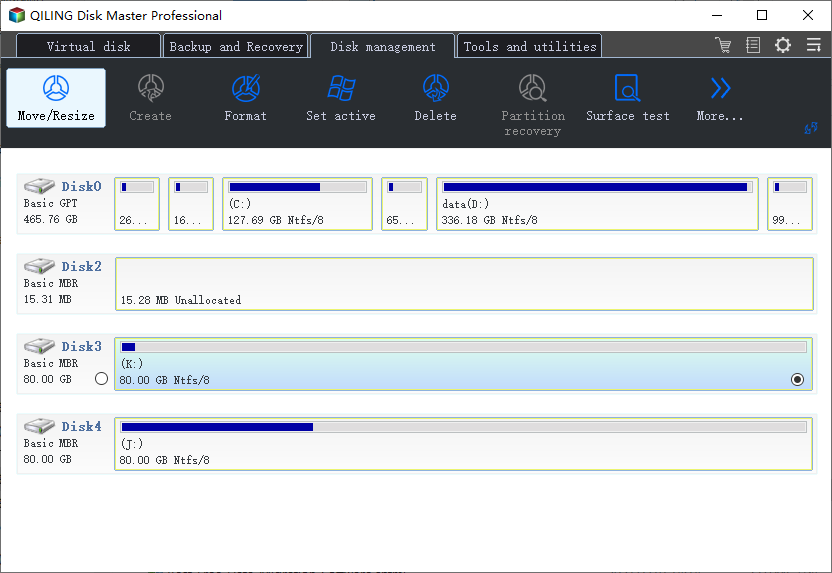
Drag the target partition handle into the unallocated space to extend partition.

Step 3. Keep all changes.
Click the "Proceed" to keep all changes.
How to Partition Hard Drive in Windows 10
If your HDD or SSD still have enough space for allocating. Then you can use Disk Management, Diskpart, and third-party software. But these methods also have limitations. Please read carefully to choose the best solution.
How to Partition Hard Drive in Windows 10 Using Disk Management
The simplest way to partition your new or existing hard drive is to use Windows' built-in Disk Management tool. Disk Management is a Microsoft Windows utility first introduced in Windows XP as a replacement for the fdisk command.
If your hard drive has only one C partition as described by the user at the beginning of this article, you can use Disk Management to shrink the C drive and create new simple volumes on the unallocated space with the following guides. Although the following operations are based on Windows 10, they still apply to Windows 8 and Windows 7.
Limitation: The volume size display in MB. For users, it is a boring step.
1. Enter into the Windows 10 Disk Management interface.
Use the Windows search box to search for "Disk management" and select "Create and format hard disk partitions" from the results box. Alternatively, use the Windows "power user" menu (Win key + X) and click "Disk management".
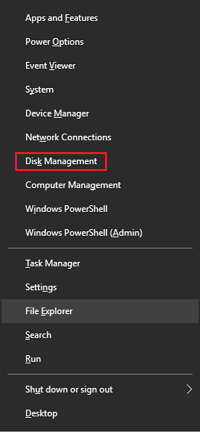
2. Right-click the hard drive and select "Shrink Volume". Then, there will be unallocated space.
3. Right-click on the unallocated space and select "New Simple Volume". Enter the New Simple Volume Wizard interface by clicking "Next" and specify volume size.
4. Assign Drive Letter or Path, then format the partition into the default file system NTFS. Click "Finish" to complete creating a new partition in Windows 10.
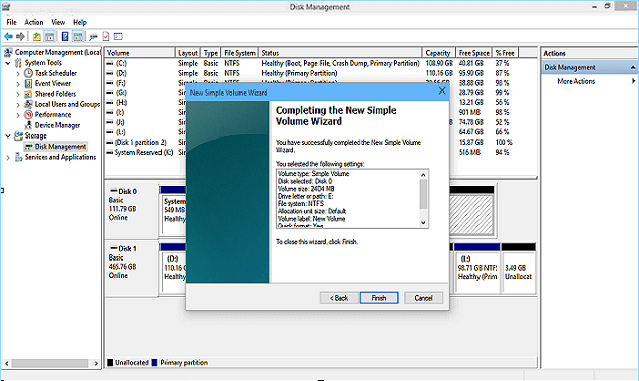
If your PC is well-partitioned, but the C drive is out of space, you can use Disk Management to delete partitions and extend the C drive.
- Tip
-
- Deleting partition will cause data loss. You should back up data in the first place.
- It works only if there is unallocated space right behind C drive. Otherwise, you will see "Extend Volume" is grayed out.
How to Allocate disk space on Windows 10 with CMD
Another tool to partition hard drive in windows 10 is Diskpart. You can use the CMD to allocate hard drive space, including extend hard drive, delete partition, format disk, and more.
Limitation: High-level design tool for users. If you have never used this tool, please try other methods.
Extend partition Steps: List disk > select disk * > list partition > select partition * > extend size=* disk=*
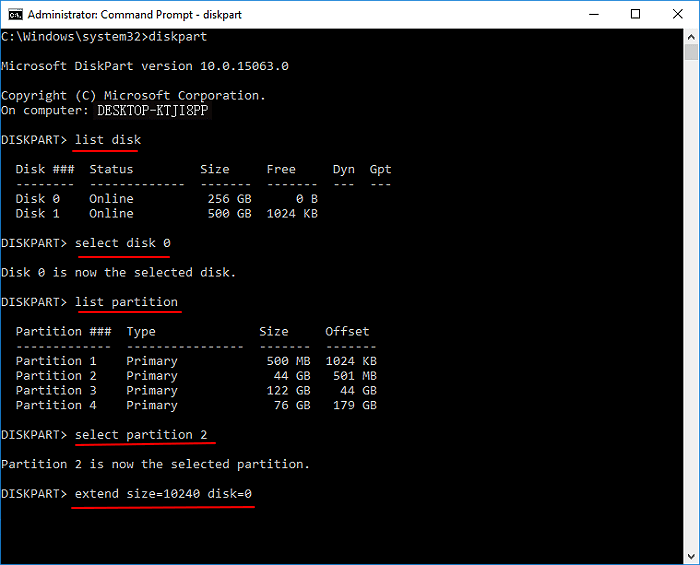
How to Do Disk Partition in Windows 11/10 with a Free Partition Manager
Qiling Partition Master enables you to partition a new hard drive or one you are using by creating, resizing, moving, and merging.
Considering the simplicity and flexibility of allocating space, this software does not have the disadvantages of the previous two parts.
If there is unallocated space on your disk, you can directly create new partitions as you like. While if your computer has only one C partition, as mentioned above, you can adjust your C drive and then create a new partition on the free space.
Step 1. Check for free space
To divide a disk partition into multiple ones, you must ensure that there has adequate free space to be allotted.
Step 2. Shrink a disk partition to create unallocated space
By doing so, start with the "Resize/Move" feature. Click on a partition with a lot free space and select "Resize/Move".

Drag either end of the partition rightwards or leftwards so you can shrink its size as the red arrow does, in order to get ample unallocated space. You can visually know how much space you've decreased in the "Partition size" area. Click "Proceed".

At last, check warning message and click the "OK" to save all the changes. Go back on the main window, there should be unallocated space appearing under the same disk of the shrinked one.
Step 3. Create a new partition on unallocated space
The last step is to turn the unallocated space into a usable partition drive with a recognized file system. Click on the unallocated space and choose "Create".
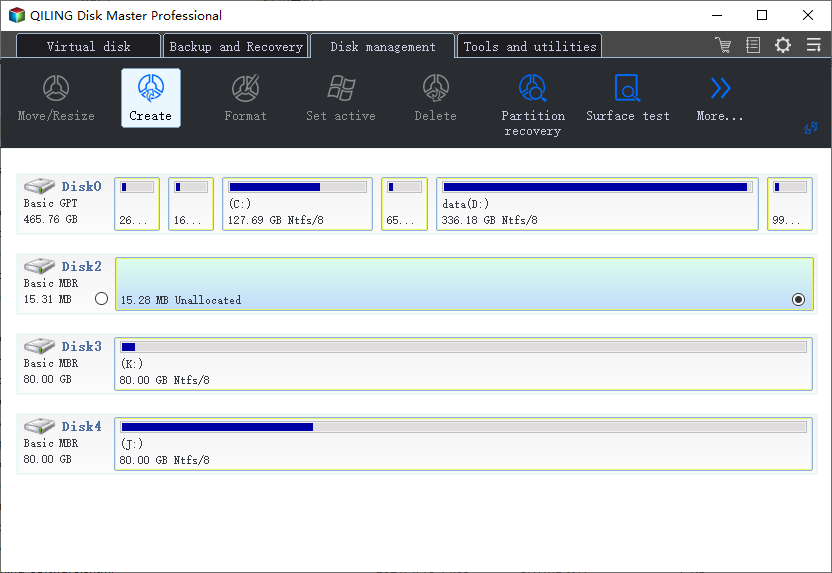
Customize the partition information by choosing a drive letter, partition label, file system (NTFS, FAT32, EXT2/3/4, exFAT) and many more settings in the Advanced Settings.
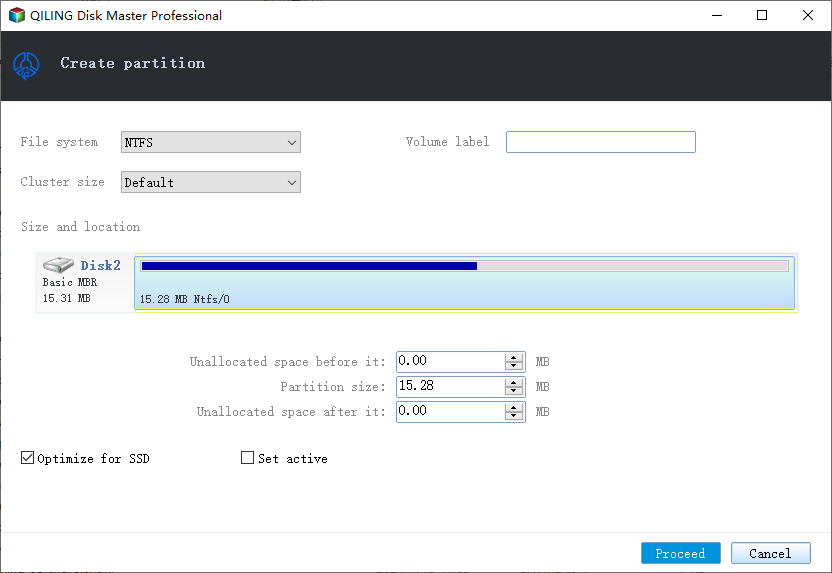
Finally, click "Proceed" to confirm that you want to create a partition on the unallocated space. Repeat the whole steps to partition a hard drive in many more partitions.
Related Articles
- M.2 vs. SSD, Which Is Better? Check Your Answer Here
- Windows 11 End of Support Date Confirmed and What to Do With That [2022 Guide]
- Top Partition Magic Freeware/Best Partition Software
- How to Remove, Delete or Format GPT Disk Partition